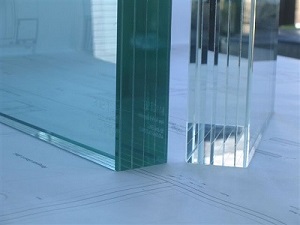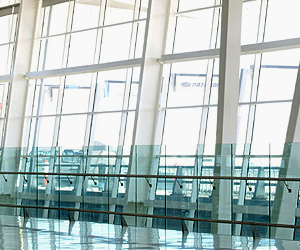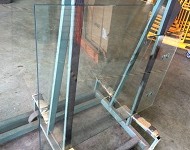Some Glass Types And Their Uses
Float or Standard Glass
This is the basic glass from which almost all the flat glass products are derived. It may be clear or coloured, and is produced in large sheets (6m x 3.21m) that are normally processed into secondary products. The term “float” refers to both a type of glass and to the process by which it is made – literally floating the molten glass on a bath of liquid tin to produce a perfectly flat surface on both sides.
Laminated or Safety Glass
Laminated glass is actually two pieces of glass bonded together by a plastic interlayer, usually in a vacuum and heating process. When shattered the glass fragments stick to the plastic, helping to increase safety. The interlayer can be varied for either decorative or security reasons. It is also referred to as “impact resistant glass”.
Toughened (or Tempered Glass)
This is also considered a safety glass, and is processed by controlled thermal treatment to increase its strength compared to normal glass. When broken, toughened glass crumbles into small pieces instead of breaking into jagged shards and is therefore less likely to cause serious injury. Cutting to size and shape must take place before the tempering process. For security purposes it is often laminated.
Low-E or Low Emissivity Glass
This glass has a layer of optically transparent metallic coating. While there are two types and methods of manufacture, they essentially provide the same properties.
Windows have long represented a major source of unwanted heat gain and heat loss. Both types of Low-E Glass are designed to transmit the maximum possible amount of visible light, absorb and reject the maximum amount of solar infra red energy, and reflect the maximum amount of long wave (room temperature) infra red energy, thus working towards more sustainable, energy efficient buildings.
 Tinted or Tint Glass
Tinted or Tint Glass
Once again, this glass can be utilised in laminated panels. The favoured use so far has been a solar-tint grey mist coloured glass which customers are using for its shading and UV blockage ability. Coloured tinted glass is more commonly used to impart some colour to windows or doors, but it does have the ability to help reduce UV rays as well, even if only a little.
Low Iron or Starfire Glass
A relative newcomer, this glass boasts superior clarity over standard float glass. It can also be tempered. It has been used in fish tanks and art-display cabinets for some time now but is finding favour in more domestic situations as customers and their architects look for better clarity in their glass product. It is frequently used in combination with solar-tint glass in double glazed units to beneficial energy-saving effect.


